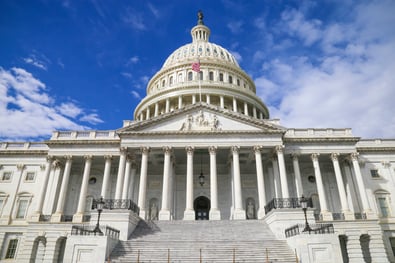 So it was with great interest that we took note of last Friday’s White House Rose Garden announcement by President Trump to “bring soaring drug prices back down to earth” by promoting competition among pharmaceutical companies, and giving private entities more tools to negotiate better deals on the behalf of consumers, insurers and employers.
So it was with great interest that we took note of last Friday’s White House Rose Garden announcement by President Trump to “bring soaring drug prices back down to earth” by promoting competition among pharmaceutical companies, and giving private entities more tools to negotiate better deals on the behalf of consumers, insurers and employers.
Somewhat surprising in his announcement was his abandonment of some of the more populist proposals which he boasted about during his presidential campaign, including his promise to authorize the Feds to negotiate directly with drug companies in an effort to lower Medicare drug prices and disallowing American consumers from importing low-cost prescription drugs from overseas.
Nevertheless, both Republican and Democrats (as well as all of us here at the JP Griffin Group) welcomed the President’s attention on combating high drug prices. The looming question remains just how the President’s promises to lower drug prices will play out and if the concepts proposed will ever come to pass.
We certainly hope the plan gains traction as both employers and employees alike could sure use a break from escalating drug prices which have now become a primary driver of health-related expenditures.
The Playbook
The “blueprint to lower drug prices”, entitled “American Patients First” has four main components:
1. Increasing competition in drug markets2. Giving private plans more tools to negotiate discounts for Medicare beneficiaries
3. Providing new incentives for drug manufacturers to reduce list prices, and
4. Cutting consumers’ out-of pocket costs
The blueprint represents the most comprehensive, serious, and thorough effort by any presidential administration to address the problem of high prescription drug prices. While imperfect, we think the outline offers many good ideas for addressing the problem of high prices, including:
- Requiring drug rebates negotiated by PBMs to be passed directly on to the patients using those drugs, instead of being used to reduce premiums for all policyholders. This should incentivize more and wider use of rebates, because price-sensitive consumers will benefit from lower prices on the drugs they themselves use.
- Requiring drug companies to disclose list prices for their drugs in television ads, just as they do for side effects and other drug risks. This should make companies think twice about charging egregious prices, knowing that there will be a PR blow-back.
- Reforming the FDA’s internal procedures in order to reduce artificial barriers to generic competition.
- Promoting the use of biosimilars (i.e., generic biotechnology drugs) and reducing barriers to their take-up.
- Preventing branded drug manufacturers from gaming FDA risk management strategies and 180-day generic launch rules to forestall generic competition.
- Providing avenues for Medicare to bulk-purchase costly drugs so as to limit the pricing power of monopolies.
What's Next
Many of the Presidents ideas can (and will) be put into effect through unilateral actions by the administration, while others, which would undoubtedly have even more impact, will require Congress to enact legislation. Congressional actions could include the following proposals put forth by the administration:- Limiting the increase in Medicare payments for drugs administered in doctors’ offices (under Medicare Part B) to consumer inflation (CPI). This change alone could yield billions in savings by ending the exploitation of current rules by drug companies.
- Moving some drugs from Medicare Part B into Part D to increase the number of drugs that fall under Part D’s negotiating process.
- Revising two laws that have driven up the cost of prescription drugs: the Orphan Drug Act of 1983, and the Biologics Price, Competition, and Innovation Act of 2009. These laws respectively allowed companies to charge exorbitant prices for drugs designed to treat rare diseases; and discouraged competition for off-patent biotech drugs.
What's Missing
 Additionally, in cases where there is only one drug approved by the FDA for treatment, if that one drug is patented, its manufacturer often exploits that fact to charge prices that would otherwise never fly in a true competitive market. Solving for situations such as this requires more aggressive action.
Additionally, in cases where there is only one drug approved by the FDA for treatment, if that one drug is patented, its manufacturer often exploits that fact to charge prices that would otherwise never fly in a true competitive market. Solving for situations such as this requires more aggressive action. Two additional points that the Trump Administration might consider, as pointed out by Henry Miller and John Cohrssen in a recent Fox News article:
1. The FDA should modernize its drug review process to approve drugs more rapidly to increase the pool of available treatments and vaccines. This could be accomplished with the use of “accelerated approval” which allows the FDA to issue a “conditional approval” of a new drug that is intended for serious or life-threatening diseases for which there is an unmet medical need.
2. Reciprocity of drug approvals based on approval by foreign regulatory agencies that have approval processes comparable to the FDA’s. This would be another option to lowering regulatory costs and increase competition and access to a greater number of drugs on the market in the US.
What Employers Can Do Today
Trump’s proposals follow a long line of other strategies employers, carriers and pharmacy benefit managers have instituted to control the alarming rise in the cost of Rx. Absent the passage of any meaningful legislation on prescription drug reform, there are still many strategies employers can enact in an effort to tame the cost burden of prescription drugs on their benefit plans. While the options open to employers vary based on the size of the company, in general these include:
- Close examination of contract terms, asking plenty of questions and insisting on regular reporting. Elimination of unfavorable policies which typically can be found in rebates, spread pricing and clawbacks policies, just to name of few.
- Redesign of prescription plans in a way that makes it more attractive for employees to choose the lease expensive products. For example, increasing co-payments or co-insurance amounts based on various factors such as the drug’s proven effectiveness and the nature of the condition being treated.
- Managing care as it relates to the quantity of drugs being initially dispensed (e.g. a 30 vs. 90-day supply). A person’s inability to tolerate a specific medication is a real concern and could be a significant source of waste if the medication needs to be discontinued.
- Reviewing plan data frequently and check for outliers, which could include drugs with dramatic price increases. Don’t hesitate to move alternative drugs to preferred status to encourage their use instead of the higher-cost drug.
- Eliminating co-pays for specialty drugs and instead substituting co-insurance (which requires workers to pay a percentage of the prescription cost rather than a flat dollar co-payment).
- Implementing disease management programs to steer people to the least setting for administering specialty drugs. (Some providers prefer to administer medication in a hospital setting but a physician’s office or retail clinic might be just as safe and effective, while also being much less expensive.
- For smaller employers, joining a regional health care purchasing coalition which could allow for a carve out of pharmacy for closer management.
- Separating prescription programs from the overall health plan to enable PBMs and employee benefits consultants to closely monitor and manage expenses.
- Carving out even further specialty drug programs so that they can be handled under the more experience eyes of specialty pharmacies, specialized PBMs and other vendors.
- Requiring prior authorization and step therapy, meaning policyholders must try less expensive drugs that are included in the formulary prior to trying the more expensive specialty drugs.
Final Thoughts
Experts who study drug pricing are encouraged (as are we) that the discussion has moved from angry protests to more sophisticated proposals. Detractors of the plan predict that it will achieve very little, primarily because it doesn’t ask Medicare to directly negotiate drug prices. Supporters of the plan believe that if it’s enacted, it will represent a “sea change in pharmaceutical pricing policy, one that will have a significant effect on drug prices in the future.”
Employers, consumers and insurance providers will all benefit if Congress and the President can work together to implement these sweeping reforms.
















